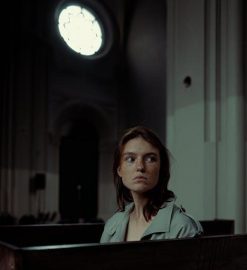arcadia tom stoppard pdf

Arcadia⁚ A Play by Tom Stoppard
Arcadia‚ a play by Tom Stoppard‚ is a witty and thought-provoking exploration of themes like time‚ truth‚ and chaos․ The play is widely considered to be one of Stoppard’s best works‚ praised for its intellectual depth‚ intricate structure‚ and its exploration of the interconnectedness of past and present․
Overview
Tom Stoppard’s “Arcadia” is a two-act play that explores the intersection of history‚ science‚ and human relationships․ Set in a grand English country house‚ the play juxtaposes two timelines⁚ 1809 and the present day․ In 1809‚ we encounter Lady Thomasina Coverly‚ a precocious young woman grappling with concepts of chaos and order‚ and Septimus Hodge‚ a tutor who introduces her to the ideas of Romantic and Classical thought․ The present day narrative follows a group of scholars researching the history of the house‚ uncovering secrets from the past and grappling with the complexities of truth and knowledge․
Plot Summary
The play unfolds in a country house in Derbyshire‚ where in 1809‚ Lady Thomasina Coverly‚ a brilliant and inquisitive young woman‚ is tutored by Septimus Hodge․ They delve into scientific concepts‚ especially those related to chaos and order․ In the present day‚ a group of scholars‚ including Hannah Jarvis‚ a literary historian‚ and Valentine Coverly‚ a descendant of Lady Thomasina‚ research the house and its history․ Hannah is determined to prove that the house was once the site of a scandalous affair‚ while Valentine investigates the possibility of a lost manuscript by Septimus․ As they delve deeper‚ they uncover secrets from the past‚ and the lines between the two timelines blur․
Themes
Arcadia is a play brimming with themes that resonate deeply with the human condition․ The play explores the interplay of order and chaos‚ the nature of truth and knowledge‚ the impact of time on our understanding of the world‚ and the enduring influence of the past on the present․ The play weaves these themes together to create a rich tapestry of ideas that challenge our assumptions and provoke thought․
Time and History
The play’s central theme revolves around the relationship between past and present‚ and how our perception of history is shaped by time․ Stoppard masterfully interweaves two timelines‚ one set in the early 19th century and the other in the late 20th century‚ showcasing the profound impact of history on our present lives․ The play underscores the enduring relevance of the past‚ suggesting that the threads of history are woven into the fabric of our present‚ influencing our understanding of the world and our place within it․
Chaos and Order
Stoppard explores the inherent tension between chaos and order‚ using the setting of the English countryside to represent the delicate balance between nature’s wild unpredictability and the human desire for structure and control․ The play juxtaposes the scientific pursuit of order‚ exemplified by the mathematical calculations of the 19th-century characters‚ with the Romantic ideals of the era‚ which embraced the beauty of chaos and the unpredictable nature of the natural world․ This interplay between order and chaos is further emphasized by the play’s nonlinear narrative structure‚ mirroring the complexities and uncertainties of life itself․
Truth and Knowledge
Stoppard’s play delves into the nature of truth and knowledge‚ questioning their absoluteness and exploring the limitations of human understanding․ The characters grapple with the complexities of historical interpretation and the elusive nature of truth‚ particularly in relation to the past․ The play suggests that truth is not a fixed entity but rather a constantly evolving process‚ shaped by individual perspectives and interpretations․ The pursuit of knowledge‚ while seemingly driven by a desire for certainty‚ is often fraught with uncertainty and ambiguity‚ as characters struggle to reconcile their own beliefs with the complexities of the world around them․
Nature vs․ Nurture
Stoppard’s play explores the enduring debate of nature versus nurture‚ examining how both innate qualities and environmental influences shape individuals․ The characters‚ particularly Lady Thomasina Coverly and Septimus Hodge‚ represent contrasting perspectives on this issue․ Thomasina‚ a precocious young woman‚ exhibits a natural curiosity and a thirst for knowledge‚ suggesting that her intellectual brilliance is inherent․ However‚ Hodge‚ her tutor‚ emphasizes the role of nurture in shaping her intellect‚ highlighting the importance of mentorship and guidance․ The play ultimately suggests that both nature and nurture play crucial roles in shaping an individual’s character and intellectual development‚ highlighting the complex interplay between innate potential and external influences․
Characters
Arcadia features a vibrant cast of characters who embody different aspects of the play’s themes․ Lady Thomasina Coverly‚ a brilliant and inquisitive young woman‚ serves as a symbol of intellectual curiosity and the boundless potential of the human mind․ Septimus Hodge‚ her tutor‚ represents a more skeptical and pragmatic approach to knowledge‚ grappling with the limitations of human understanding․ Hannah Jarvis‚ a contemporary scholar researching the past‚ acts as a foil to Thomasina‚ exploring the complexities of historical interpretation and the search for truth․ Valentine Coverly‚ Thomasina’s descendant‚ embodies a modern‚ scientific approach to understanding the world‚ contrasting with the romantic and idealistic views of the past․ These characters‚ along with others‚ contribute to the play’s rich tapestry of personalities‚ each offering unique perspectives on the interplay of history‚ time‚ and human nature․
Lady Thomasina Coverly
Lady Thomasina Coverly‚ a central character in Stoppard’s “Arcadia‚” is a precocious and intellectually gifted young woman․ She embodies the spirit of the Enlightenment‚ with a boundless thirst for knowledge and a fascination with scientific discovery․ Her conversations with her tutor‚ Septimus Hodge‚ reveal her remarkable understanding of mathematics‚ physics‚ and even chaos theory․ Thomasina’s inquisitive nature and her passion for exploring the world around her make her a compelling and endearing character‚ representing the boundless potential of the human mind and the enduring search for knowledge․
Septimus Hodge
Septimus Hodge‚ a tutor at the Coverly estate‚ plays a pivotal role in “Arcadia․” He is a complex character‚ balancing a passionate romanticism with a deep appreciation for classical order․ Hodge’s relationship with Lady Thomasina‚ his pupil‚ is a fascinating one‚ marked by intellectual sparring and a burgeoning‚ albeit forbidden‚ romance․ His efforts to teach her about the world‚ particularly in the areas of mathematics and physics‚ ultimately lead to a profound impact on her development․ He also serves as a link between the past and present‚ his actions and encounters having lasting consequences on the lives of those who follow him․
Hannah Jarvis
Hannah Jarvis‚ a modern-day scholar researching the history of the Coverly estate‚ is a key character in “Arcadia․” She is driven by her passion for uncovering the truth about the past‚ particularly the events surrounding the relationship between Septimus Hodge and Lady Thomasina․ Hannah’s investigation‚ which often leads her down winding and unexpected paths‚ is both scholarly and intensely personal‚ reflecting her own intellectual curiosity and her desire to connect with the past․ Her pursuit of knowledge mirrors the intellectual fervor of those who came before her‚ creating a fascinating interplay between the past and the present․
Valentine Coverly
Valentine Coverly is a contemporary character in “Arcadia” who represents the modern world’s fascination with chaos theory and the interconnectedness of systems․ He is the descendant of the Coverly family‚ who lives in the same grand house where the play’s events unfold in the past․ Valentine is a complex character‚ grappling with the legacy of his ancestors‚ his own personal struggles‚ and the search for meaning in a world seemingly governed by randomness․ His intellectual pursuits often lead him down paths of self-discovery‚ echoing the intellectual explorations of his predecessors in the play․
Setting
The setting of “Arcadia” is a sprawling country estate in Derbyshire‚ England‚ known as Sidley Park․ The play’s action takes place in two distinct periods⁚ 1809‚ during the Romantic era‚ and the present day․ The grand house and its surrounding gardens serve as a backdrop for the exploration of themes like order and chaos‚ nature and culture‚ and the interplay between the past and present․ The physical space of the estate‚ with its intricate gardens‚ labyrinthine corridors‚ and rich history‚ acts as a symbol of the interconnectedness of time and the enduring influence of the past on the present․
Style and Structure
Stoppard’s “Arcadia” is renowned for its unconventional structure and playful style․ The play employs a non-linear narrative‚ seamlessly jumping back and forth between the 19th and 20th centuries‚ weaving together the stories of characters from different eras․ This interweaving of timelines underscores the play’s central themes of history‚ truth‚ and the interconnectedness of past and present․ Stoppard’s use of metafiction‚ where characters discuss the nature of theatre and storytelling‚ further adds to the play’s intellectual and playful nature‚ challenging conventional notions of time and reality․
Non-Linear Narrative
One of the most striking aspects of “Arcadia” is its non-linear narrative structure․ The play seamlessly jumps between two distinct periods⁚ the early 19th century and the late 20th century․ This constant shifting between past and present creates a sense of fluidity and interconnectedness‚ blurring the lines between history and the present moment․ The characters from each era are intertwined‚ their lives and experiences echoing and reflecting upon each other․ This innovative approach to storytelling allows Stoppard to explore the enduring nature of human desires‚ the complexities of truth‚ and the interconnectedness of history․
Interweaving Timelines
Stoppard masterfully interweaves the timelines of the 19th and 20th centuries‚ creating a complex tapestry of characters and events․ The play unfolds in two distinct periods‚ but the characters from both eras are interconnected‚ their actions and motivations echoing across time․ The past and present are not merely juxtaposed; they are interwoven‚ revealing how historical events and ideas continue to influence the present․ This intricate structure allows Stoppard to explore the cyclical nature of history‚ the enduring power of ideas‚ and the ways in which the past shapes the present․
Metafiction
Arcadia embraces metafiction‚ blurring the lines between reality and the theatrical experience․ The play is self-aware of its own artificiality‚ with characters discussing the very act of storytelling and the nature of theatrical representation․ This self-reflexivity invites the audience to question the nature of truth and knowledge‚ as well as the limitations of our understanding of the past and present; Stoppard’s use of metafiction encourages a deeper engagement with the play‚ prompting us to consider the role of the playwright‚ the audience‚ and the very act of creating and interpreting stories․
Critical Reception

Upon its premiere in 1993‚ Arcadia received overwhelmingly positive critical acclaim․ Critics lauded Stoppard’s intricate plot‚ witty dialogue‚ and exploration of complex themes․ The play was praised for its intellectual rigor‚ its ability to engage audiences on multiple levels‚ and its seamless blending of humor and profound philosophical ideas․ Arcadia was widely regarded as a triumph of contemporary theater‚ solidifying Stoppard’s reputation as a master playwright․ Many critics highlighted the play’s unique ability to simultaneously entertain and stimulate thought‚ making it a lasting success in both scholarly and popular audiences․
Adaptations and Productions
Arcadia has been widely produced and adapted since its premiere․ The play has been staged in numerous theaters worldwide‚ garnering critical acclaim and captivating audiences with its intellectual depth and engaging narrative․ The play’s popularity has led to several adaptations‚ including a 2009 BBC Radio 4 adaptation‚ a 2011 opera by the composer Julian Philips‚ and a 2012 film adaptation by director Richard Eyre․ These adaptations showcase the play’s enduring appeal and its ability to translate across different mediums․
Tom Stoppard’s Arcadia remains a captivating and thought-provoking work that continues to resonate with audiences today․ The play’s exploration of time‚ history‚ and the interconnectedness of past and present offers a rich tapestry of ideas and challenges viewers to consider the nature of truth and knowledge․ Arcadia serves as a testament to Stoppard’s brilliance as a playwright‚ showcasing his ability to weave complex themes into a compelling and entertaining narrative․ The play’s enduring popularity is a testament to its enduring relevance and its power to engage audiences on multiple levels․



Leave a Reply
You must be logged in to post a comment.